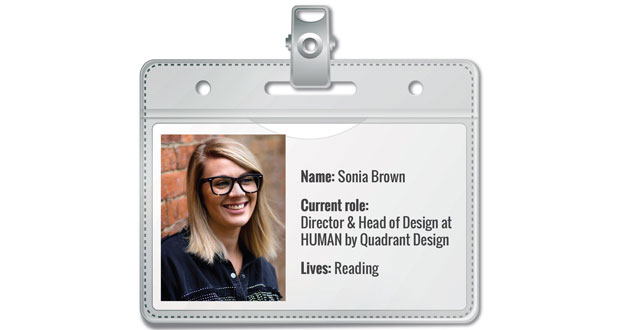Q: What first attracted you to working in FM, did you have much awareness of the profession?
After working in the retail and hospitality sectors for the past 12 years, around 18-months ago we started to gain organic enquiries from brands and companies that wanted a design agency to look at their office space from a different perspective and not a cookie-cutter approach to office design. Since then, we have been exploring how our experience can influence how we create workplace environments. Whilst getting to know this sector, it also became apparent just how male dominated it is and bringing a more female approach to design, and how it is relayed to the client, is a space we really feel we can bring a different experience.
Q: How did you progress through the profession to your current role?
I started off as a junior designer after graduating from Leeds Metropolitan University where I studied interior architecture. I joined Arcadia where I worked my way up to a middleweight designer, before moving on to work on International design projects across various sectors. Seven years ago, I joined Quadrant Design, where I established my career managing the account for Watches of Switzerland, Radley and L’Oreal, where I managed a team of designers to design and deliver concepts throughout the UK and internationally. I was made a director of the company in 2017, and in 2020 developed sub-brand HUMAN Workplace Design, our brand build specifically for the workplace.
Q: What have you found the most challenging experiences working in FM?
The biggest challenge I find is when pitching against a design and build firm, educating the client that selecting a design agency doesn’t mean a more expensive option. There is real value in selecting a team of people who specialise in an area, rather than finding a one-size-fits-all approach, which can often lead to weak design with the focus purely on cost. We want to work with companies and brands who really value the design of their space and how that in turn, affects and connects with their staff.
Q: What have you found most satisfying about working in the sector?
I absolutely love being able to bring in lighting techniques, furnishings and artwork into spaces which are not traditional to the workplace sector. Hunting for pieces or specifying furniture that would typically be used in a restaurant, hotel or home, rather than the many ‘samey’ furniture suppliers, is the part I enjoy the most.
Q: What qualities do you think are most needed for a successful career in FM?
Being brave and thinking outside the box and looking for places of inspiration that are unexpected. It is also so important to connect with your client and really understand what feeling and output they are trying to achieve from their environment.
Q: What has changed about your job role since the COVID-19 crisis? E.g. home working, furloughed, redeployed?
I have been fortunate to work throughout the pandemic, however working from home is not something I had ever done prior to March 2020. For me, the biggest challenge with home working was not feeling connected to my company. My role very much stayed the same throughout, with more of a focus on business development, exploring how to pivot during such challenging times. The outcome was our workplace brand that is based upon the principles of honesty, approachability and a fresh approach to workplace design, far removed from that of others in the industry.
Q: What is your organisation doing to ensure the wellbeing of staff – whether working at home or returning to the workplace?
Without fail, since mid-March, we have had a 9.00 am team call, every single day. We felt it was so important to keep the connection there and to motivate one another. Also it becomes essential to understand workload across the team as not being in eyesight of each other can easily lead to people silently struggling behind closed doors. We also made sure all equipment was couriered to our staff’s homes so that everyone had the right kit and set-up to help them with their daily tasks. Our MD also has frequent one to one catch ups with the team.
Q: Do you believe the pandemic has highlighted the important role of the FM sector and what areas do you see as most key?
Yes, the pandemic has highlighted a new way of working and has made companies realise that we can all work in a flexible way. Where home working has not worked for many companies previously, it has sped up the process of understanding how this can work and many have embraced it and benefited in some way. It has, however, also illustrated how important our physical spaces are. They are the glue that brings our teams together, socially and professionally. Our office spaces are often our shop window, attracting new talent and retaining staff and tell the story behind who we are as brands and companies, our ethos, values and heritage. Our office spaces are not just spaces to accommodate desks, they are spaces that connect us, influence and inspire us, to create a sense of belonging and pride in our work.
Q: What advice would you give to someone coming into the profession now?
I would encourage anyone entering the profession to just really challenge the brief and always look for inspiration in unusual places. Research, research, research always leads to a strong concept that sticks when it comes to design. There should always be a root behind everything we design that brings it back to the client.
Q: Which of your achievements are you most proud of during your career?
One of my proudest moments during my career to date, is a recent pitch that I won on a project which was proposed deep in the pandemic. I designed the new concept for Goldsmiths, luxury high street jewellers, which will be rolled out across their estate this year. They are a client I have worked with for the last seven-years on both store design and office designs, so to continue our journey together, especially during such a challenging time, is something I am very proud of.
Q: What do you predict could be the main changes to the FM sector post pandemic?
I think brand HQs will become inspirational hubs and work a bit like ‘pop-up’ stores which do so well within the retail sector. They are environments which are created where we fall in love with the brand, learn about their ethos, become a fan. The transaction doesn’t happen here, but we engage with the brand, that’s how I see offices. Less as spaces where we do all of our daily tasks, and more as environments that allow us to do our best work, our dreaming, our big ideas and collaborating. In terms of future staff, these spaces will be where people learn about the company, feel connected to the ethos and a space which is designed to attract the next talent coming through. These spaces will be hubs which accommodate social interactivity, meetings, collaboration, dreaming and also will be the safe place. Where home is having to work so much harder than it ever has, it is now a school, gym, restaurant, entertainment space, the office will actually become the escape from the stresses of life and a place where we do our best work.





